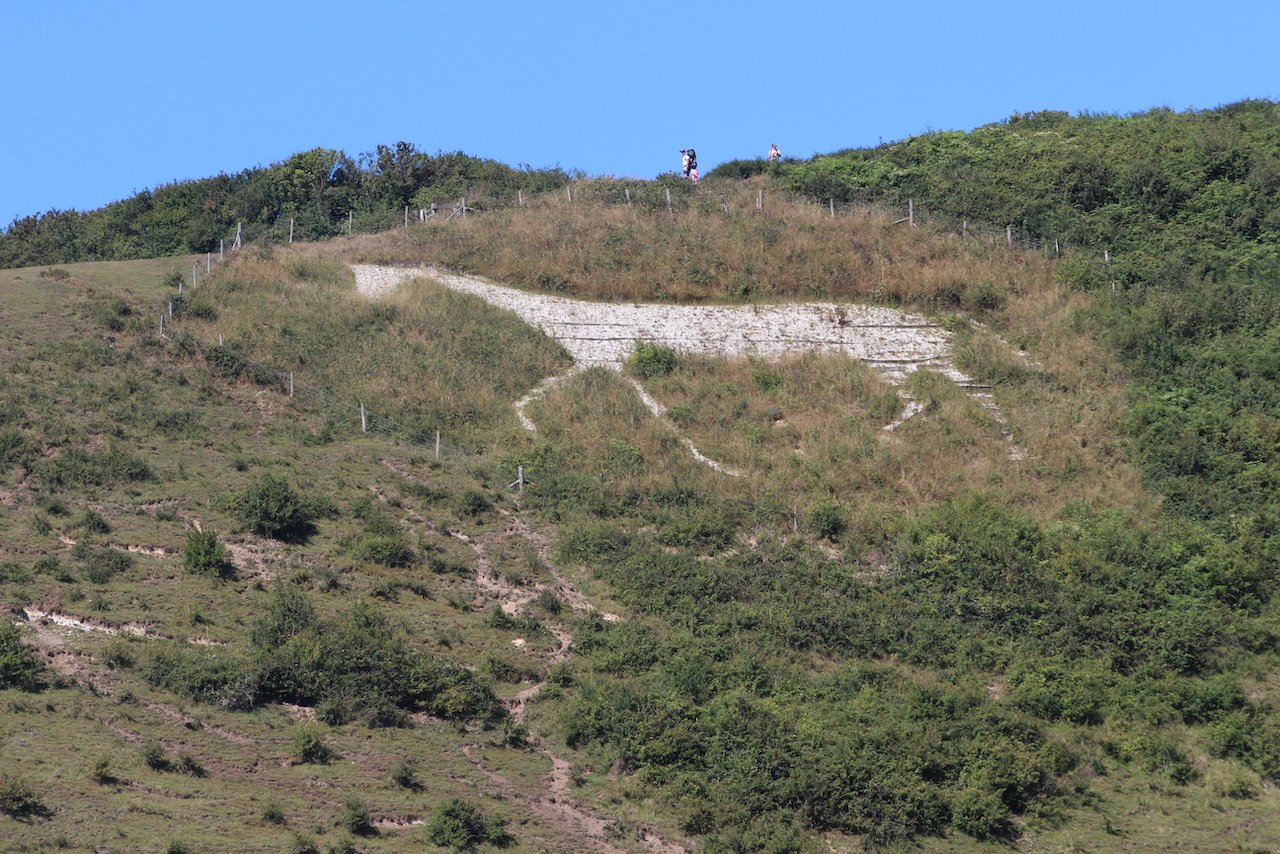One of our favourite walks - the dogs and me - is alongside the River Cuckmere, under the watchful eye of the chalk horse some 200 metres above us.
The other day, when I was ambling along the bank and the dogs were sploshing in the river getting coated with mud, I noticed activity within the body of the horse. It was, as you can see below, a much needed scouring - weeding and replenishing the chalk - being carried on by National Trust volunteers.
But it set me wondering how many other chalk horses there are in the UK. Good old google gave the answer: sixteen white horse chalk figures (or 17 if you include the painted one at Cleadon Hills, but then Tynesiders are an odd lot). The best horse, our horse of course, was first cut in the chalk on High-and-Over hill above the Cuckmere Valley, supposedly by a couple of local lads in 1860 as a memorial to a local girl whose horse bolted and threw her to her death there. But in 1924, because the original got overgrown, it was re-cut and improved during a single night.
Of the other fifteen, 8 are in Wiltshire and the rest scattered around the place. Here they are, in age order and left to right: Uffington (bronze age), Westbury (1778), Cherhill (1780), Marmond (1790’s), Marlborough (1804, cut by naughty schoolboys), Osmington (1808), Alton Barnes (1812), Hackpen (1838), Woolbury (1846), Kilburn (1857), Broad Town (1864), Cleadon (1887), Pewsey (1937), Devizes (1999), Heeley (2000), Folkestone (2003) and Lutterworth (2012). If you’re on the ball you’ll realise I’ve listed 17 but shown only 16…three are ringers, aren’t chalk and shouldn’t count but are white horses so make the list by default.
More famous perhaps, and certainly more interesting, are the three other hillside figures: the Cerne Abbas giant (Roman by legend but probably a mere 400 years old but a symbol of fertility for some mysterious reason but enough so that local ladies, wanting to get pregnant, are wont to rub themselves along a certain part of his body), The Long Man of Wilmington (wishfully thought to be Iron Age but more likely 16/17th century…over the years has been blessed with a phallus and even given a sex change but now is discretely unclothed) and The Bulford Kiwi. This was cut by New Zealand soldiers waiting for their demob in 1919, impatient and overcrowded at Bulford camp but put to work by their commanding officer to prevent further unrest.
Which brings me to the wonderful work of Eric Ravilious. What needs to be said?
As for dark horses: haven’t they said enough?




























